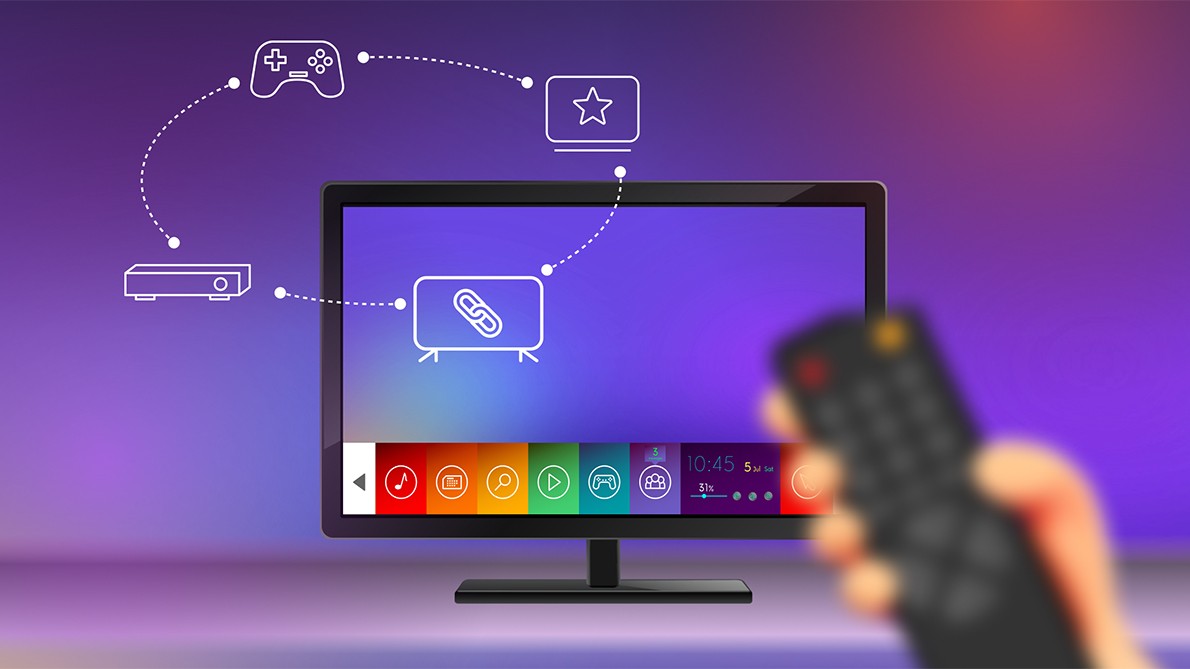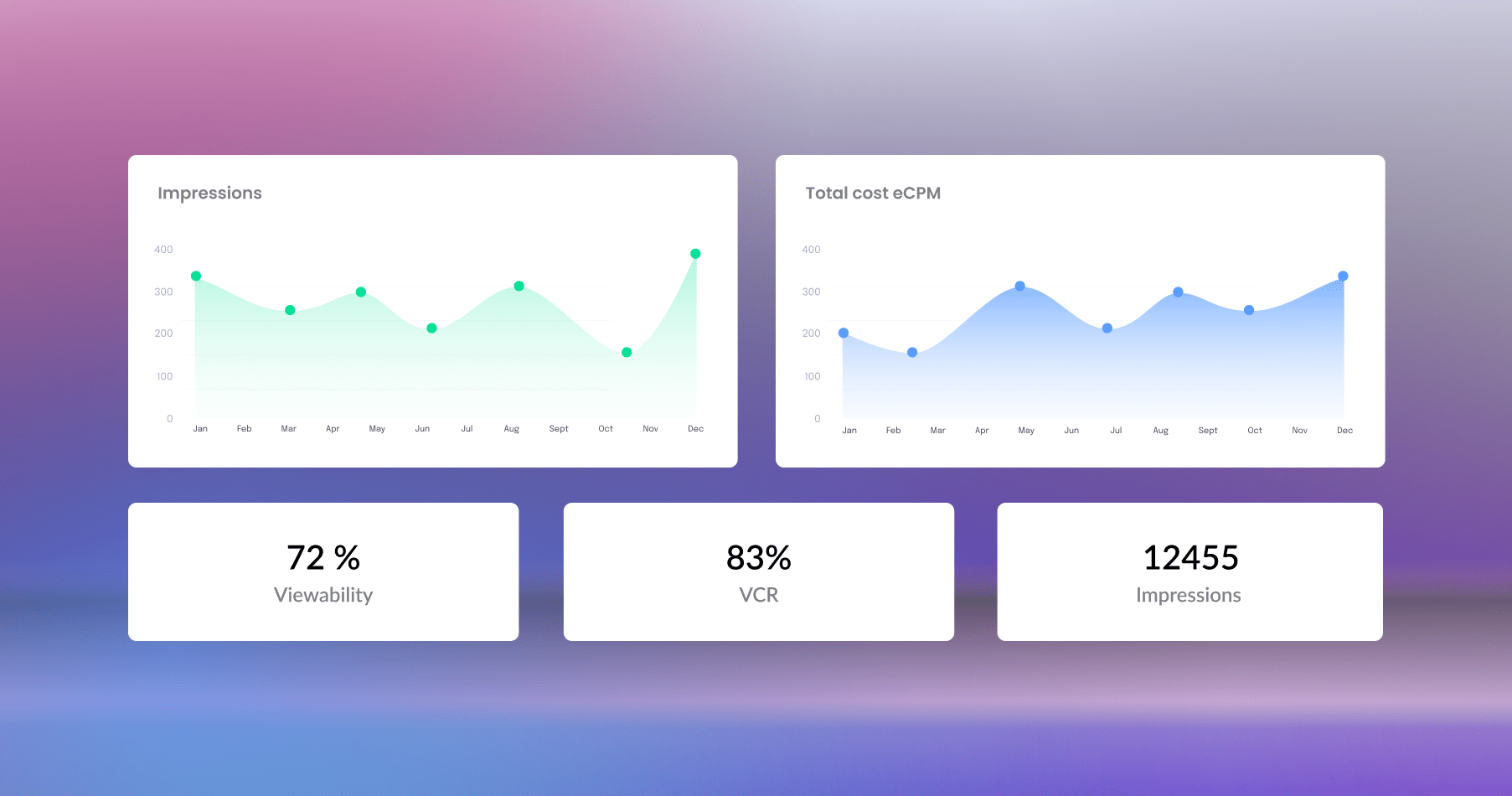The ever-changing, fast-paced world creates many new options to supersede the old. Such an example today is Connected TV (CTV), which has already replaced linear TV for many millions of users worldwide. The impact of CTV cannot be ignored since 71% of American households with a TV have at least one Smart TV accessed. This means that a large part of the population has already given up conventional linear television.
The innovative kind of video content broadcasting has also created new ways of implementing advertising campaigns. This article outlines the main differences between СTV measurement and linear TV measurement, their strengths and weaknesses.
What is CTV?

Connected TV (CTV) is a special device connected to a television for the purpose of broadcasting video content. Such a device could be an Xbox or a PlayStation. Importantly, such a tool can also be integrated into the television. For instance, a Smart TV by Samsung that allows you to surf the net without the need for auxiliary connectivity devices. This solution appears to make life a lot easier, creating a new space of opportunities.
It is worth noting the role of OTT, which provides access to viewing content over the internet. OTT represents one of CTV’s main players. An example of an OTT video streaming service is the well-known Netflix platform, or HBO Max. OTT and CTV are two of the most common ways of watching television today that are often confused with each other.
Thus, CTV and OTT provide users with personalised content. This digital experience is created based on viewing history, preferences and user accounts, whereas linear television relies on a given audience coverage. Say, linear television will not offer for viewing a film in a foreign language because the choice of target audience often depends on geographical data.
What is linear TV?
Linear television is the familiar, gradually disappearing cable television. In the case of linear television, users are not given a choice of content to watch. For each channel, there is a pre-created programme of broadcasting in which advertisements are inserted. Thus, viewers cannot rewind or deactivate commercials until the end of the scheduled time.
One would assume that this would mean one hundred per cent viewability of the advertisement by the audience. In practice, however, this is far from being the case.
After all, television does not necessarily work because it is watched. It turns out that linear TV measurement does not give an accurate picture of the scale of content being shown. But on the other hand it obviously offers some advantages.
CTV advertising measurement

CTV measurement is about tracking and analysing the success of television advertising campaigns. In order to plausibly measure the efficiency of advertising, many CTV metrics need to be considered.
It is vital to know not only the number of ad impressions, but also how customers act after browsing the content. Big data processing must also be connected in order to succeed. After all, big data is the key to personalising content for customers. Maximising the use of extended television advertising can be a real challenge.
Oxagile is a reliable partner for video content owners and distributors in overcoming adtech challenges. The company is a true expert in CTV and linear TV: digital outdoor advertising, AVOD monetisation, digital out-of-home adverts and much more in which Oxagile can become your assistant.
Discover how to strengthen your promotional offer with the Oxagile OTT advertising bespoke solutions.
Despite the high rate of growth in popularity, CTV measurement also has a number of challenges for information gathering.
Benefits of CTV measurement
CTV advertising measurement offers a large number of advantages for companies. First and foremost is the reach of an audience that has given up on linear television. And the percentage of such customers is increasing every year. After all, CTV is gaining popularity in seven-dimensional steps.
A further advantage of CTV measurement is the opportunity to get a client’s opinion. Customers’ actions after watching your ads, the number of views, impressions of your brand — all of this is available through Connected TV measurement. While linear TV can only provide an approximate customer perception, CTV measurement is able to indicate a more detailed picture of an advertising campaign. So, using this method of broadcasting content, marketing campaign performance can be analysed in more detail.
Challenges of CTV measurement
CTV attribution is a complex process primarily due to the lack of uniform standards. There are no cross-platform indicators in the CTV advertising space, making it challenging to capture viewer audiences. Moreover, in order to correctly size the number of spectators, it is necessary to be skilled in handling big data.
The next difficulty will be the complexity of identifying the user. The CTV measurement platforms rely on IP addresses, which makes counting tricky. After all, one or more people can see an advertisement from the same address. There is also a separate issue if the same user is viewing ads from different devices.
Many people always switch between linear and Connected TV. As the different kinds of television do not exchange data with each other, this creates a measurement problem as well.
And there is also the challenge of dishonest advertising. Indeed, it is much easier to fake a commercial for CTV than it is for linear TV or a mobile app.
Best approaches of measuring CTV
Measuring the success of advertising with a single indicator is impossible. Several approaches need to be used to assess the whole picture of the campaign’s progress.
A hybrid approach to multi-channel attribution
This approach means the need to measure users and their interaction with advertising in a hybrid way. Combinations of signals such as people counters and Automatic Content Recognition Techniques eliminate duplicate content.
Select the best approach
Accurately measuring the audience of CTV advertising is quite complicated. But selecting the best approach is possible.
There are two possible solutions:
- pixel technology to record the display, start and end of video, and to detect invalid traffic;
- SDK for multi-channel recording.
Making a proper report
Make sure that the content displayed is effective by checking the activity of the advertisement. For example, exclude the display of CTV advertisements when the device is switched off.
Brand promotion tracking
Evaluate the success of the influence of CTV advertising. Conduct customer surveys for additional information on audience satisfaction. And also collect measurement data.
Linear TV advertising measurement

Just like Connected TV, linear TV measurement has its strengths and weaknesses. In many issues, linear tv is no less powerful than the innovator of streaming TV.
However, this approach is extremely effective paired with Connected TV, which we have already understood. So let’s break it down.
Benefits of linear TV measurement
Ad campaigns can be launched to coincide with particular events through linear television, for instance, a commercial before a sporting event or a specific event. Timed campaigns are often highly effective, generating positive customer attitudes.
Also the vast majority of older people prefer linear television. Do not forget about this segment of the population, because it also accounts for a sizable percentage. The older generation is renowned for its gullibility to ads, which means they are more reactive to such content than anyone else.
Particularly relevant is the fact that linear television is strictly segmented following the topic of the channel. This enables us to carefully select the right channel for effective linear TV advertising, as well as the time of the demonstration. By selecting the exact time, it is easy to find the period in which the advertisement will be seen by a larger number of users.
Challenges of linear TV measurement
Regarding the drawbacks of linear TV measurement, the main ones are the extensive targeting and the lack of accuracy common to CTV and OTT. In fact, just because the television is on, it doesn’t mean it is being watched. A person may fall asleep, be distracted and not see the linear TV advertising.
As far as targeting is concerned, it cannot be precise enough, even when considering the subject matter of the channel. After all, linear television does not collect any user info.
New approaches to measuring linear TV
The linear TV measurement is not standing still. Already today, innovative companies are presenting a novel way of looking at linear tv advertising measurement. Let’s explore the list of firms proposing to change the way we look at linear TV measurement.
- ISPOT. The ISPOT linear TV measurement platform assists in optimising the return on investment. Ispot provides connection to millions of TVs and direct integration with more than 300 streaming platforms and DSPs. The platform provides a full report on the metrics for your advertising. Analytics are extremely quick and can be available in as little as 24 hours.
- SAMBA TV. SAMBA TV enables the measurement of the real reach of linear content impressions. The company’s solutions track the impact of TV ads on viewers and collect information, including whether they continued to watch TV after the ad. The system also provides ad metrics that include online conversions, online purchases and in-store visits.
- NIELSEN. The all-new NIELSEN project is a cross-platform product capable of measuring the number of views by second. The platform features de-duplicated measurements for linear TV. Crucially, Nielsen will enable advertisers to use a common metric for linear TV and CTV ads. Also, the product introduces an always-on digital dashboard, which frees users from waiting for data reset.
How to measure the success of TV advertising?

Undoubtedly, choosing the right platform for a given aim is extremely important. But it is also important to be able to determine the effectiveness of the advertisement. Various metrics help to determine performance in the case of television advertising.
By geography, industry, distribution channel, type of device, type of media buying the performance metrics may differ. However, it is worth noting that only one of these is not enough for a meaningful evaluation. Let’s consider the range of metrics of success:
- Video completion rate. VCR metric is a first-priority especially if the target of your advertising is to lift the brand. It shows how many times the ad has been viewed until the end. In this way, you can gain information about people’s interest and involvement in the advertisement.
- Reach. This metric is responsible for the number of unique ad viewers. The indicator is extremely useful in evaluating the success of the campaign, the budgetary costs and the right choice of platform.
- Viewability score. The visibility indicator provides a measure of the format in which it is better to show ads. Usually the visibility score is based on the viewing time and the percentage displayed on the phone, computer or TV screen.
- Audible score. Another indicator is responsible for the number of shows in which the advertisement was heard.
- Attribution tracking. Attribution is linked to the relationship between the investment in the campaign and the customers’ expected actions (clicking on the company’s website, buying the company’s products, etc.).
- Cost per thousand views. Refers to the cost of thousands of views, regardless of uniqueness or visibility.
- Cost per completed view. The ratio between the cost of an advertising campaign and the number of completed (full) views.
CTV vs. Linear TV: Conclusion
Thus, advertising with CTV and linear TV are two fundamentally different concepts. Each method is good for its own purpose. To create a successful marketing strategy, it is essential to be able to apply both approaches at the same time. CTV advertising can show a pre-made clip already established for linear TV exactly for your target audience, which will increase the reach considerably.
Also, with the inclusion of advertising on both channels, you gain a lot more placement. Moreover, CTV can act as an extension of traditional TV advertising. In such a case, it is a matter of additional client loyalty.
Programme-companies often share data on the number of views on linear channels. Thus, when passive information is analysed, it is possible to follow the progress of watching on linear TV, and to manage it with CTV.
Linear TV and CTV advertising have incredible potential benefits which, used in combination, can generate beneficial results for the programme. In order to obtain high results, it is essential to distinguish and manage to balance the two different approaches.



























